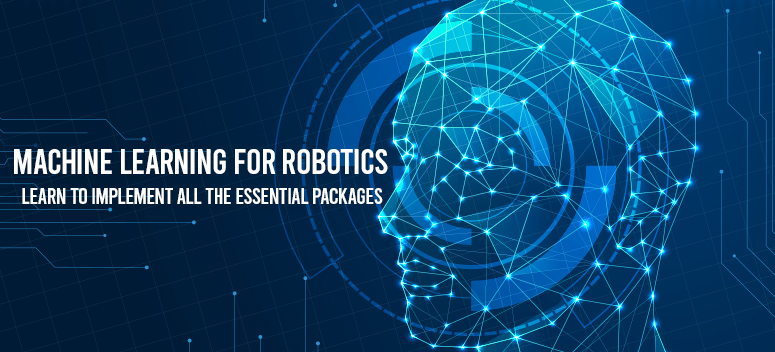
Machine learning is a part of Artificial Intelligence which provides it the ability to learn from its experience. Due to machine learning, it does not need to be programmed. With the use of machine learning, the programs will be able to learn from the data it gathers.
To start your machine learning journey, you need a good package. So, let’s see some of these packages and how you can apply them.
Packages for Improving your Experience in Machine Learning
As a data scientist, you need these packages to carry your journey forward in the field of Machine Learning:
MICE Package
If you face the problem of missing values, then MICE is the package most suitable for you. When someone face this problem, they usually proceed by the common process of changing with 0, changing with mode, changing with mean, etc. But these methods are not very effective.
The MICE helps in recovering the missing values by applying many techniques, which varies on the type of data that is missing.
Here is the process of how to use it:
dataset <- data.frame(var1=rnorm(20,0,1), var2=rnorm(20,5,1))
dataset[c(2,5,7,10),1] <- NA
dataset[c(4,8,19),2] <- NA
summary(dataset)
In the above steps, we have introduced some of the missing values and built a random data frame. After that, we will see what MICE can actually do.
install.pckages(“mice”)
require(mice)
dataset2 <- mice(dataset)
dataset2<-complete(dataset2)
summary(dataset2)
In the above steps the parameter, which is the default for MICE, is used. You can also alter the parameters according to your needs.
rpart Package
This package is used in the R language for creating classification models with the help of a procedure, consisting of two-stage. The model which appears is depicted as binary trees. The primary way of plotting a classification tree by the help of rpart package is to bring the plot () function.
“Recursive Partitioning and Regression Trees” is the full form of rpart. You will be able to run both classification and regression by using rpart. Its syntax is very simple- “ rpart(formula, data=, method=,control=) “.
By considering the “iris” database lets see how to predict the species with the help of a decision tree.
rpart_tree <- rpart(formula = Species~., data=iris, method = ‘class’)
summary(rpart_tree)
plot(rpart_tree)
The function is simple for predicting a new database:
“ predict(tree_name,new_data) “
This will provide you with the classes which were predicted.
PARTY
Recursive partition is done by using the PARTY package. The development of the group of methods is reflected by this package. This is based on the “Conditional Interface algorithm.
The training time and bias is reduced by the “ctree()” function of the PARTY package.
Party has a syntax just like other predictive functions in R,
“ ctree(formula,data) ”
To create a tree using the above syntax you have to follow the given steps:
party_tree <- ctree(formula=Species~. , data = iris)
plot(party_tree)
CARET
CARET or Classification and REgeneration Training is the package that has been developed with the purpose of mixing the prediction and model training. The data scientists with the help of the CARET package can run different kinds of algorithm for a business.
With a controlled experiment, the CARET package can help to investigate the best result for a given algorithm. The data scientist can crete the price of a building based on the model. It is possible due to the functions which it has in-built for performing feature selection, data splitting, variable importance estimation, data- pre-processing and modeling.
After you have installed CARET, you will be able to run “names(getModelInfo())”. You will see that to run through this single process there are 217 methods.
The function used by CARET to create a predictive model is “train()”. Its syntax is: “train(formula, data, method)”.
So, let’s see how to use it. Let’s take the database of “iris” as an example.
Lm_model <- train(Sepal.Length~Sepal.Width + Petal.Length + Petal.Width, data=iris, method = “lm”)
summary(lm_model)
CARET not only helps in building models but also does the transformation of your splitting data.
randomForest
It is one of the most popular algorithms in the field of Machine learning for robotics. This package is used to build a huge amount of decision trees, after that, all the observations are put into the decision tree.
The output which is the most common for the observations is regarded as the ultimate result. At the time of using this algorithm, the data scientists have to be sure so that the outcome variable is in the form of factors or numeric. There should not be more than 32 levels in the case of factors.
Taking the example of the “iris” database, let’s create a Random Forest
Rf_fit<-randomForest(formula=Species~., data=iris)
Your Random Forest is ready by running the line similar to other packages. So, let’s see its performance.
print(Rf_fit)
importance(Rf_fit)
Sometimes in the randomForest, you may have to change the control parameters, eg, the number of trees you want to create, the number of variables in each tree, etc.
Conclusion
So, these are some of the essential packages in Machine learning for robotics. With these packages, you can get started on your machine learning straight away. By using these packages, you will be able to optimize the machine learning experience to a great extent.
